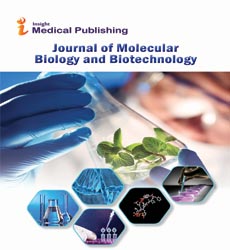A Short Note on Gene Cloning
Michael A Kochen*
Department of Hematology and Oncology, University of Kyoto, Kyoto, Japan
- *Corresponding Author:
- Michael A Kochen
Department of Hematology and Oncology,
University of Kyoto, Kyoto,
Japan,
E-mail: kochenma@uw.edu
Received Date: July 2, 2021;Accepted Date: July 16, 2021;Published Date: July 23, 2021
Citation: Kochen MA (2021) A Short Note on Gene Cloning. J Mol Biol Biotech. 6 No.4:e002
Description
Quality cloning is the cycle where a quality of interest is found and replicated (cloned) out of all the DNA removed from a living being. The essential strides in quality cloning are: DNA (Deoxyribo Nucleic Acid), the atom that encodes the hereditary data.
Quality cloning is a typical practice in sub-atomic science labs that is utilized by specialists to make duplicates of a specific quality for downstream applications, for example, sequencing, mutagenesis, genotyping or heterologous articulation of a protein. The customary procedure for quality cloning includes the exchange of a DNA piece of interest from one living being to a self-duplicating hereditary component, like a bacterial plasmid. This method is normally utilized today for segregating long or unstudied qualities and protein articulation.
Cloning a specific gene
The prior portrayals are nonexclusive ways to deal with making recombinant DNA. Notwithstanding, a geneticist is keen on confining and portraying some specific quality of interest, so the methodology should be custom-made to seclude a particular recombinant DNA clone that will contain that specific quality. The subtleties of the cycle vary from one organic entity to another and from one quality to another. A significant introductory factor is the decision of a suitable vector for the current task.
Vectors should be moderately little atoms for accommodation of control. They should be fit for productive replication in a living cell, subsequently empowering the intensification of the embedded giver section. Another significant necessity is that there be advantageous limitation destinations that can be utilized for inclusion of the DNA to be cloned. Interesting locales are most valuable since then the supplement can be designated to one site in the vector. It is likewise significant that there be a component for simple distinguishing proof and recuperation of the recombinant atom. There are various cloning vectors in current use, and the decision between them regularly relies upon the size of the DNA fragment that should be cloned. We will think about a few normally utilized sorts.
Plasmids
As portrayed before, bacterial plasmids are little roundabout DNA particles that are unmistakable from, just as extra to, the primary bacterial chromosome. They reproduce their DNA freely of the bacterial chromosome. Various sorts of plasmids have been found in microscopic organisms. The dispersion of any one plasmid inside animal varieties is by and large inconsistent; a few cells have the plasmid, though others don't. In Section 9, we experienced the F plasmid, which presents particular kinds of conjugative conduct to cells of E. coli. The F plasmid can be utilized as a vector for conveying huge contributor DNA embeds, as we will find in Part 12. Nonetheless, the plasmids that are regularly utilized as vectors are those that convey qualities for drug obstruction. The medication obstruction qualities are valuable in light of the fact that the medication safe aggregate can be utilized to choose for cells changed by plasmids, yet additionally for vectors containing recombinant DNA. Plasmids are additionally a productive method for intensifying cloned DNA in light of the fact that there are numerous duplicates per cell, upwards of a few hundred for certain plasmids.
Two plasmid vectors that have been broadly utilized in hereditary qualities are displayed in Figure 10-6 on the accompanying page. These vectors are gotten from regular plasmids; however both have been hereditarily changed for helpful use as recombinant DNA vectors. Plasmid pBR322 is less complex in structure; it has two medication opposition qualities, tetR and ampR. The two qualities contain interesting limitation target locales that are helpful in cloning. For instance, giver DNA could be embedded into the tetR quality. A fruitful addition will part and inactivate the tetR quality, which then, at that point will presently don't give antibiotic medication obstruction, and the cell will be delicate to that medication. Subsequently, the cloning technique is blend the examples of cut plasmid and giver DNA, change microorganisms, and select first for ampicillin-safe provinces, which probably been effectively changed by a plasmid atom. Of the AmpR settlements, just those that end up being antibiotic medication delicate have embed; at the end of the day, the AmpR TetS provinces are the ones that contain recombinant DNA.
Open Access Journals
- Aquaculture & Veterinary Science
- Chemistry & Chemical Sciences
- Clinical Sciences
- Engineering
- General Science
- Genetics & Molecular Biology
- Health Care & Nursing
- Immunology & Microbiology
- Materials Science
- Mathematics & Physics
- Medical Sciences
- Neurology & Psychiatry
- Oncology & Cancer Science
- Pharmaceutical Sciences
